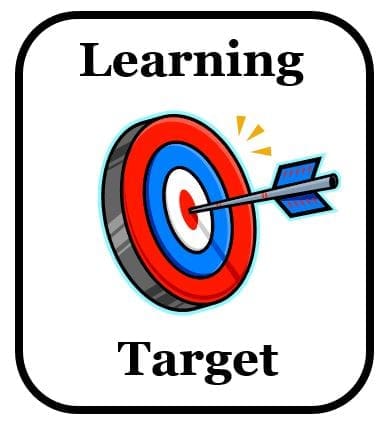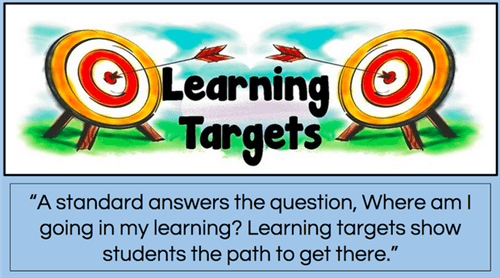
Introduction
To enhance students’ learning experiences, the initial step is to establish well-defined learning objectives. This is the role of learning targets, which are straightforward and clear statements. They outline what students are expected to understand and accomplish by the conclusion of a lesson or unit. These targets act as a roadmap for both educators and learners. They ensure everyone is aligned and focused on the same goals.
Key Highlights
- Learning targets are crucial for setting clear expectations and promoting student learning.
- They help students understand the purpose of their learning and track their progress.
- Effective implementation of learning targets involves aligning them with curriculum standards and integrating them into daily instruction.
- Regular monitoring and assessment of student progress toward learning targets is essential for providing feedback and making adjustments as needed.
- When used effectively, learning targets can enhance student engagement, increase student achievement, and foster greater ownership of learning.
The Essence of Learning Targets in Education

In education, learning targets play a crucial role in establishing a productive and engaging environment. They act as guides, enabling students to navigate their journey as they acquire new knowledge. By breaking down broad learning objectives into smaller, manageable steps, these targets make it easier for students to grasp and retain information.
Furthermore, learning targets are closely linked to success criteria. When success is defined in straightforward terms, students can easily assess their own understanding. This process allows them to identify areas where they may need additional support or practice. This transparent approach empowers students to take charge of their learning and continuously strive for improvement.
Defining Learning Targets for Clarity and Direction

Learning targets are essential for helping students know what they need to focus on. Unlike broad objectives, effective learning targets are concise, measurable, and utilize action-oriented verbs. Words like “identify,” “explain,” “analyze,” or “create” illustrate the specific skills or actions students should demonstrate after a lesson.
It’s crucial to maintain clarity when crafting learning targets. Teachers should choose straightforward language that students can easily grasp. Steering clear of complex terminology ensures that all students, regardless of their background or learning style, can understand and connect with the targets.
When learning targets are clear and well-defined, they serve as valuable aids in the learning process. They function like a roadmap, leading students along their educational journey with clear objectives and intentions.The Importance of Learning Targets in Reaching Educational Objectives
Learning targets play a crucial role in achieving educational objectives. They serve as benchmarks to track and assess student progress. When educators establish clear learning objectives with specific targets, it allows them to monitor student development and identify areas where additional support may be required. This enables teachers to make informed decisions about their instructional approaches and provide tailored assistance to individual students or groups.
Research indicates that learning targets positively impact student performance. Studies reveal that when students understand their learning objectives and are given opportunities to assess their comprehension, their academic performance improves. This is largely because learning targets engage students, encourage them to reflect on their work, and instill ownership over their own learning.
By setting clear standards and establishing a roadmap for success, learning targets are instrumental in achieving educational aspirations. They empower students to take initiative in their learning and strive for excellence.
Strategies for Implementing Learning Targets Effectively
Learning objectives need a fresh approach. It’s time to shift the focus from teachers to students. Educators should do more than simply present learning goals; they need to actively engage students in the process.
This involves guiding students in setting their own educational aims and giving them opportunities to assess their understanding of the content. Regular feedback is crucial for improvement.
Learning objectives should be integral to daily lessons; they shouldn’t be treated as an afterthought. By incorporating them into lesson planning, activities, and assessments, teachers can foster a vibrant and impactful educational experience. This empowers students to take ownership of their learning journeys.
Aligning Learning Targets with Curriculum Standards
A fundamental aspect of successfully implementing learning targets is to ensure they match curriculum standards. This connection helps ensure that teaching goals align with the overarching educational framework, allowing students to effectively develop strong knowledge and skills. Teachers can foster this alignment by:
- Identifying key standards: Start by pinpointing the specific curriculum standards to be addressed in the lesson or unit.
- Breaking down the standards: Deconstruct these standards into smaller, more digestible learning targets that clarify the precise knowledge, skills, or concepts students should master.
- Checking for alignment: Consistently review and tweak learning targets to ensure they stay in harmony with the curriculum standards and address any disparities or areas that need enhancement.
| Curriculum Standard | Learning Target |
| Analyze how particular elements of a story or drama interact (e.g., how setting shapes the characters or plot). | Identify and explain how the setting of the story influences the characters. |
This table illustrates how a broader curriculum standard can be translated into a specific, measurable, and student-friendly learning target.
Integrating Learning Targets into Daily Instruction
Incorporating learning objectives into everyday teaching is crucial for enhancing student understanding. You can seamlessly do this by weaving them into various parts of your lesson, such as:
Lesson Introductions: Kick off each lesson by articulating the learning objectives. This gives students a clear sense of the lesson’s purpose.
Instructional Activities: Design activities that align with the learning objectives. Provide students with opportunities to practice and apply the necessary skills or concepts. For instance, you might use a graphic organizer or organize small group discussions about the text, using the learning objectives as a focal point.
Closure Activities: Wrap up each lesson by revisiting the learning objectives. Encourage students to reflect on what they’ve learned and ask any lingering questions.
By embedding learning objectives into everyday instruction, educators cultivate a transparent learning environment. This clarity helps students grasp what is expected of them and track their own progress effectively.
Monitoring and Assessing Student Progress Towards Learning Targets
Learning targets effectively goes beyond simply writing them down. It’s essential to monitor how students progress and use assessment data to inform lesson planning. Educators should incorporate a mix of assessment types, such as formative and summative, to gauge student comprehension and identify areas where they might struggle.
Formative assessments, like exit tickets, quick writes, or discussions in class, provide immediate feedback that allows teachers to modify their instruction on the spot. In contrast, summative assessments offer a comprehensive look at what students have learned by the end of a unit or grading period. By analyzing assessment data, teachers can refine their teaching strategies and provide additional support to students who need it.
Techniques for Continuous Monitoring of Learning Progress
Keeping an eye on students’ progress is essential for their success. It ensures they meet their learning objectives and allows teachers to adjust their methods as necessary. This ongoing process offers valuable insights into students’ grasp of the material, helping educators identify and address any learning gaps swiftly. There are various methods teachers can use for continuous monitoring, such as:
Observations: Teachers can observe students during class activities, paying attention to their engagement and understanding of lesson objectives. Taking notes helps track each student’s development and highlights any patterns or issues.
Check for Understanding: Quick assessments throughout the lesson can provide immediate feedback. Techniques like thumbs up or down, exit tickets, or think-pair-share activities offer instant insight into students’ comprehension.
Student Self-Assessments: Encourage students to reflect on their learning and track their own progress. Providing clear rubrics outlining expectations for each learning goal can be motivating.
Utilizing Assessment Data to Refine Learning Targets
Assessment data serves as a guiding tool for educators. It enables teachers to refine their learning objectives and ensures they are appropriately tailored to student needs. By routinely analyzing assessment outcomes, educators can identify trends in student comprehension or areas of difficulty. This insight supports data-driven teaching decisions.
For example, if numerous students struggle with a particular learning objective, it may indicate the need to break it down into smaller, more manageable parts. Additionally, the teaching approach may need to adapt. Conversely, if students are grasping a goal effectively, it could be a sign that they’re ready for more challenging material or that the goal can be expanded for even greater learning depth.
Utilizing assessment data for ongoing enhancement allows educators to keep learning objectives relevant and effective, giving students a greater chance to succeed.
Conclusion
To sum up, concentrating on learning targets is crucial for students’ success in school. Having clear and measurable targets provides direction and aligns with educational objectives. Implementing strategies that integrate these targets into daily lessons, aligning them with curriculum standards, and tracking progress are essential for effective teaching and learning. By regularly revising learning targets using assessment data, educators can help students stay focused on achieving their academic aspirations. It’s also vital to understand the distinction between learning targets and learning objectives to develop a focused and results-oriented educational strategy. Start incorporating targeted learning methods today to enhance student performance and foster a culture of achievement!
Next Post
